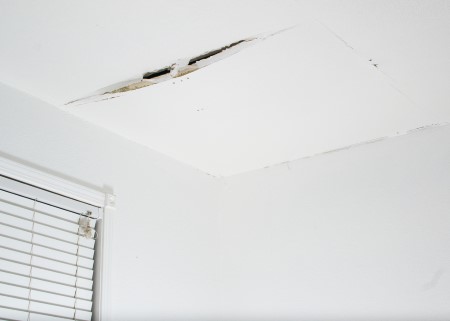6 Water Damage Reconstruction Do's and Don'ts.
6 Water Damage Reconstruction Do's and Don'ts.
Blog Article
What're your ideas on How To Prevent Fire And Water From Ruining Your Holiday Season?

Water offers life, water breach on components where it's not supposed to be can result in damages. Homes with water damages smell old and also moldy.
Water can originate from many resources such as tropical cyclones, floodings, ruptured pipes, leakages, and also sewer issues. In case you experience water damage, it would be good to recognize some safety and security precautions. Here are a few guidelines on just how to handle water damages.
Do Prioritize Home Insurance Coverage Insurance Coverage
Water damage from flood because of hefty winds is seasonal. You can also experience an abrupt flooding when a defective pipe unexpectedly ruptures right into your residence. It would be best to have residence insurance policy that covers both disasters such as natural calamities, and also emergencies like busted plumbing.
Don't Neglect to Switch Off Utilities
In the event of a disaster, especially if you stay in a flood-prone location, it would be suggested to turn off the main electrical circuit. This removes power to your whole home, stopping electric shocks when water can be found in as it is a conductor. Additionally, do not forget to turn off the main water line valve. When floodwaters are high, furnishings will move and trigger damages. Having the main valve shut down prevents additional damages.
Do Stay Proactive and Heed Weather Condition Alerts
Pay attention to evacuation cautions if you live near a creek, lake, or river . Doing so reduces possible property damages.
Don't Disregard the Roofing System
Before the weather turns shocking, make certain you have a roofing inspection. Actually, it would be prudent to get this service annually as it can mitigate complex issues. If there are no openings and leakages in your roofing, you can prevent rain damage. Your contractor will likewise care for faulty gutters or any other indications of weakening. This will certainly protect against water from moving down your wall surfaces and also saturating your ceiling.
Do Take Notice Of Little Leaks
A burst pipe does not occur overnight. Normally, there are red flags that show you have deteriorated pipes in your home. For example, you might observe gurgling paint, peeling off wallpaper, water touches, water discolorations, or leaking audios behind the walls. Eventually, this pipe will break. Preferably, you need to not await things to escalate. Have your plumbing fixed prior to it leads to enormous damage.
Do Not Panic in Case of a Burst Pipeline
Maintaining your clearheadedness is vital in a time of crisis. Panicking will only compound the problem since it will stifle you from acting quickly. Timing is key when it comes to water damages. The longer you wait, the more damage you can anticipate. Therefore, if a pipeline bursts in your house, instantly shut down your main water shutoff to remove the source. After that unplug all electric outlets in the location or turn off the breaker for that part of your house. Call a trusted water damages reconstruction specialist for aid.
Water offers life, water invasion on parts where it's not supposed to be can result in damages. Houses with water damage scent musty and also old.
Water damage from flooding fees to hefty winds is seasonal. You may see bubbling paint, peeling off wallpaper, water streaks, water discolorations, or dripping audios behind the walls. When it comes to water damages, timing is crucial.
Some Do's & Don't When Dealing with a Water Damage
DO:
Make sure the water source has been eliminated. Contact a plumber if needed. Turn off circuit breakers supplying electricity to wet areas and unplug any electronics that are on wet carpet or surfaces Remove small furniture items Remove as much excess water as possible by mopping or blotting; Use WHITE towels to blot wet carpeting Wipe water from wooden furniture after removing anything on it Remove and prop up wet upholstery cushions for even drying (check for any bleeding) Pin up curtains or furniture skirts if needed Place aluminum foil, saucers or wood blocks between furniture legs and wet carpet Turn on air conditioning for maximum drying in winter and open windows in the summer Open any drawers and cabinets affected for complete drying but do not force them open Remove any valuable art objects or paintings to a safe, dry place Open any suitcases or luggage that may have been affected to dry, preferably in sunlight Hang any fur or leather goods to dry at room temperature Punch small holes in sagging ceilings to relieve trapped water (don't forget to place pans beneath!); however, if the ceiling is sagging extremely low, stay out of the room and we'll take care of it DO NOT:
Leave wet fabrics in place; dry them as soon as possible Leave books, magazines or any other colored items on wet carpets or floor Use your household vacuum to remove water Use TV's or other electronics/appliances while standing on wet carpets or floors; especially not on wet concrete floors Turn on ceiling fixtures if the ceiling is wet Turn your heat up, unless instructed otherwise

I'm just very occupied with Reducing Your Risk Of Water And Fire Damage At Home and I hope you liked the entire page. Loved our blog posting? Please share it. Help another person find it. I love reading our article about Simple Solutions To Preventing Fire And Water Damage To Your Home.
Report this page